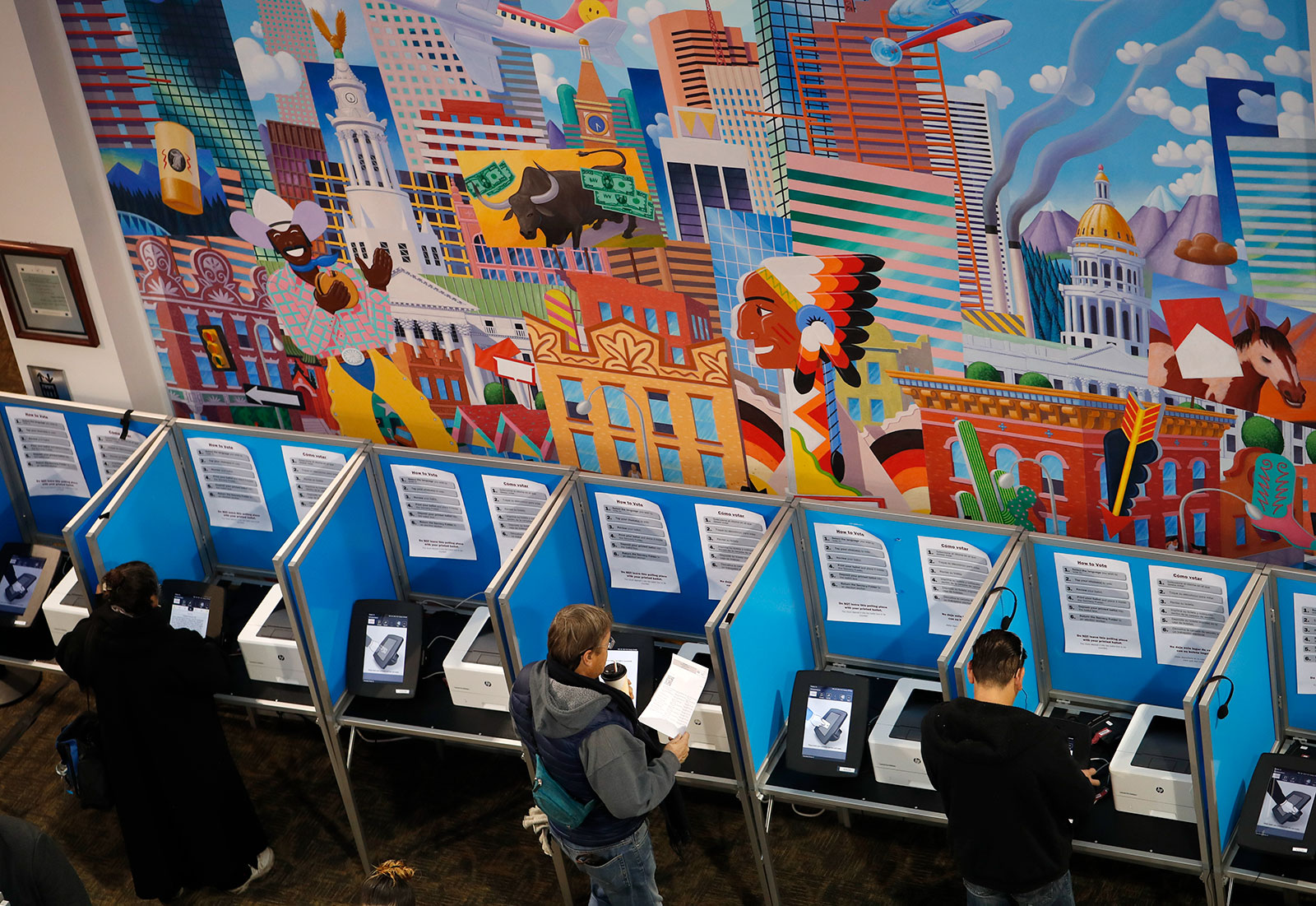The Local newsletter is your free, daily guide to life in Colorado. For locals, by locals.
November 8, 2016 was a big day—and not just because of the presidential election outcome. It also marked the end of presidential caucusing for the foreseeable future in the Centennial State. Colorado voters passed two major initiatives that day—Propositions 107 and 108—which, respectively, established a primary voting system to select presidential candidates and allowed unaffiliated voters to participate in those primary elections.
Presidential primary voting is not entirely new in Colorado; in 1992, 1996, and 2000, the state also held primaries. But the state returned to the traditional presidential caucus structure in 2004 because, among other things, it’s cheaper—and the state and counties don’t pick up the tab, the parties do. Coloradans caucused again in 2008, 2012, and 2016, but both Democrats and Republicans grew increasingly frustrated with the format. It all came to a head in 2016, when Democrats struggled to deal with overcrowding at caucus locations, and Republicans preemptively canceled their presidential preference poll. After the state legislature failed to establish a primary structure during the 2016 session, voters approved Proposition 107 and 108 in November.

What’s the difference?
It’s a major shift. First of all, caucuses are run by state parties—meaning Colorado’s Democrat and Republican leaders throughout the state were responsible for organizing and funding them. Essentially, groups of registered voters would come together for private meetings across the state and discuss issues and candidates. At the end of those meetings, individuals formed groups for the candidates they support. The candidate with the largest group ultimately earned the most delegates. Technically, the caucus won’t completely vanish: each party will still hold a caucus meeting for state races, but they will be smaller and no presidential nominees will be selected.
Colorado’s March 3 presidential primary, which is part of Super Tuesday, will be a more straightforward, simple process. The primary is administered by the state and counties and will feel much like the elections Colorado holds every November. County Clerk’s will mail ballots to all registered voters 22 days before the election—meaning ballots will be in the mail the week of February 10, around the same time New Hampshire voters go to the polls for the first-in-the-nation primary. (Check your registration here.)
How does it work?
Registered Democrats and Republicans will receive one ballot that has only their party’s presidential candidates on it (February 3 is the last day you can change your party registration ahead of the primary.) And for the first time in Colorado, unaffiliated voters will also participate in the presidential nominating process, and will receive two ballots: one with Democratic candidates and another with Republican candidates. Unaffiliated voters can only return one ballot; if you return both, neither will count.
To be clear, unaffiliated voters will not be registered with a political party if they choose that party’s ballot (as happens in some states). Of course, who you vote for remains confidential, but which party’s ballot you return will be part of public record.
What about in-person voting?
In Colorado, there are several ways to vote: You can place your completed ballot back in the mail, but it must be received by your county clerk before polls close on Election Day. You can also bring it to any one of your county’s drop-off sites up until 7 p.m on Election Day. And, of course, you can still vote in person at any polling station in your county between 7 a.m. and 7 p.m. on March 3. Select voting centers will be open on February 24, so some people will be able to vote early in person, as well.
What else is new?
For the first time in the Centennial State, thanks to the newly enacted Colorado Votes Act, 17-year-olds will be able to vote in the presidential primary as long as they turn 18 on or before November 3, the day of the general election. The law also mandates that every college campus in Colorado have a voting center and a ballot drop-off location.
Wait, what about the Senate primary?
For those following Colorado’s Democratic primary for Senate—in which former Gov. John Hickenlooper is the frontrunner—you will not be casting a ballot for that race on March 3. That primary, along with other state and local elections, will be on June 30. The eventual nominee will be on the November 3 general election ballot vying to unseat Republican Sen. Cory Gardner.
Yes, that means civically engaged Coloradans will have to vote at least twice before November’s election. So, why doesn’t the state hold the presidential, senate, and other primaries all on one day to make it easier? According to Judd Choate, director of elections for Colorado’s Secretary of State’s office, it’s a logistical matter. First, when voters passed Proposition 107, the language of that initiative mandated the presidential primary be held during the first half of the month of March. Moreover, it’s a cumbersome process in order to get on the ballot for state primaries.
For instance, the candidates running for Senate have to collect at least 10,500 valid signatures (including 1,500 from each of the state’s seven congressional districts) by March 17 in order to get on the June ballot. Alternatively, they can go to the state’s nominating assembly on April 18 and hope to win at least 30 percent of delegates there. It’s a serious undertaking for parties and candidates to solidify the state primary ballot in June—typically many months in the making, Choate explains. “If we tried to move that June primary up to marry it with that presidential primary,” he says. “The parties would really not like it.”
Over the next 10 months, there are three big contests—two primaries and a general election—that you’ll need to prepare for. So buckle up. Election season is here.








